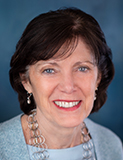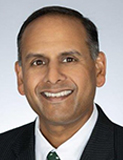Medical professional liability (MPL) megaverdicts hit a record high in 2023, an unfortunate outcome for MPL insurers, healthcare organizations, and providers. A $261 million verdict was returned by a Florida jury against John’s Hopkins Hospital, St. Petersburg, following a child abuse accusation that was chronicled in a Netflix documentary, Take Care of Maya.1,2 Just a month earlier, a New York jury returned a $120 million verdict against Westchester Medical Center Health Network on a case in which a delay in treating a stroke victim led to brain damage.3
On average, megaverdicts in 2023 came in at a higher number than any previous year.4 A total of 57 of those, more than half were over $25 million.5 Clearly, these trends do not bode well for the MPL industry.
Increasing social inflation, a changing jury pool, the rising influence of generative AI, and the coming retirement wave of experienced MPL defense attorneys may all play a role in increasing severity, in addition to numerous other factors. As the backlog of cases from the COVID-19 pandemic court closures continues to clear, more cases are going to trial and/or reaching settlement. This means it is a good time to take the pulse of the MPL claims, litigation, and settlement landscape.
We spoke with a variety of industry sources to gather information for this article, including:

Joanna Barnes,
Vice President, Insurance and Risk Management at University Hospitals Health Systems, Cleveland, OH

Kathleen Barclay,
Partner, O’Connor, O’Connor, Bresee and First, PC, Albany, NY

Dianne Salter,
Executive Vice President, Jefferson Health, Corporate Insurance Services, Philadelphia, PA

Nan Holland,
Vice President, Corporate Risk Management, Novant Health, Winston-Salem, NC

PK Shere,
Partner, Huff Powell & Bailey, Raleigh, NC

Scott Bailey,
Partner, Huff Powell & Bailey, Atlanta, GA
In this article, you’ll gain insight into the factors shaping MPL claims outcomes in 2024 along with some takeaways as to how you can best manage the evolving situation.
RISING SEVERITY
Increasing severity is an issue throughout the country, but it is especially acute in certain jurisdictions classified by the American Tort Reform Association (ATRA) as Judicial Hellholes.6 In the 2023-2024 report, ATRA ranked Georgia and Pennsylvania courts as the number one judicial hellholes. A judicial hellhole is a jurisdiction where civil liability continues to expand because the courts allow questionable lawsuits to proceed, welcome litigation tourism, or otherwise tilt the litigation system to favor the personal injury bar.”7
What we’re seeing in the Southeast Pennsylvania area is an increase in the severity of awards by juries,” said Salter. The Hospital at the University of Pennsylvania lost an appeal in February on a record $183 million verdict in a case of a child who suffered severe brain injuries at birth.8 Temple University Hospital not only lost an appeal on a $26 million case where a man alleged that his leg injuries were incorrectly diagnosed, but also had another $3.7 million added to the award by a Court of Appeals judge.9
Rising severity is driven, at least in part, by increasingly large asks by plaintiff’s attorneys, who utilize enormous lifecare plans and other alleged costs that they claim are necessary to make the plaintiff whole after an alleged MPL injury.
Salter is encouraging defense attorneys to get ahead of these large asks in court by presenting their own estimate of damages based on their own lifecare plans and economic analysis. “Previously, we were waiting for plaintiffs to give us a demand,” she said. “What we’re trying to encourage our claims directors to do now is to work with our defense counsel to communicate numbers first—we are trying to give the jury something to deliberate on rather than leaving plaintiff counsel’s suggested values of the case unchallenged.”
Bailey agreed, saying, “The big thing we are doing is we are acknowledging damages, and when it’s appropriate, we are really arguing damages. We get a lot of push back from our clients, and we educate them, saying that this is the new reality. If you do not acknowledge damages, the plaintiff’s attorney puts a number out there that is unchallenged, and the jurors sit there thinking $60 million must be okay because the defense didn’t say anything to counter it.”
“At the same time, you’ve got to say listen, we don’t believe you should find any damages at all, but if you do, you’ve got to give them a number and explain the basis for that number,” he continued. “That’s a counterbalance to whatever the other side decides to ask for. We’re in a new reality with sophisticated jurors in a polarized political environment. Arguing only standard of care and causation and ignoring damages like we all used to do is no longer the correct approach in my opinion.”
Shere noted that not only is the “alleged” value of cases increasing exponentially, but that the gap between jurisdictions that used to exist is shrinking. “It used to be you might see a huge verdict in Cook County [Illinois] that might be worth something more than a case, say, in North Carolina, but today we’re seeing a shrinking in the gap between what the values are in jurisdictions across the country,” he said. “Essentially, everyone wants more money.”
CHANGING JURY POOLS
While generational shifts are affecting jury pools nationwide, the pool composition differs between states, which have different requirements around jury summons. In Georgia, jurors are now selected from a pool of drivers with state licenses, those with state identification cards, and registered voters.10 Previously, the pool was drawn from registered voters only, said Bailey.
“Post-COVID, whether it’s directly related to COVID or whether it’s the current environment, we’ve seen a much more polarized jury pool,” he continued. “Jurors are more cynical, more suspicious, and more likely to be polarized in their views. The plaintiff’s bar has been ahead of us in recognizing that and exploiting it to their advantage.”

In an effort to counter the plaintiff’s bar, Bailey noted that his firm is acknowledging what the jury is likely feeling, as well as the injury that took place, and the responsibility for it without acknowledging liability. “It’s a delicate balance, but we have to allay some of the jumping to conclusions that jurors have in terms of believing that someone must have done something wrong,” he added. “Whether that’s from COVID or because everything has become so politicized, acknowledging that we’re not trying the system, that the system has flaws, but that their job is to decide this case and only this case.”
Salter noted that jury pools are changing. “I think that juries get the idea that there has been harm done,” she said. “It may not be harm that has been done to them, but harm happened, and people have a hard time separating that out in terms of blame. And I’m not sure that we do a great job in putting it out there.”
Connecting to the jurors is an important component of relating to the modern jury pool, said Barclay, “We need to learn about the jurors and make connections with them. You then can use that as you pick your jury and also as you are presenting your case, because you are learning what resonates with them. This starts with identifying the leaders in the potential jury pool and relating to other jurors based on what opinions those leaders have expressed.”
“You’ve got to weed out healthcare biases during jury selection because that is what really is going to start sinking cases,” she continued. “It used to be, for example, that a parental guidance claim was around $250,000. Now, we are seeing $1 or $2 million a child. The value that is being presented to the jury from the plaintiff’s side is so much, you need to figure out what the jurors’ feelings are on the value of a dollar before they are going to deliberate, otherwise you could end up with a bad verdict.”
Holland noted that society as well as plaintiffs seem to be more frustrated with the healthcare system and are sometimes looking for someone to pay more than they have in the past. The focus is less directed at the individual issue and more toward the system. Social media and conversations outside the settlement conversations are much more prominent and can impact public perception and therefore the potential jury pool. “We’ve started to see juries over the past three or four years that are more critical of the healthcare experience,” she added. “They tend to look more critically at large healthcare systems or corporations. The perception seems to be that healthcare corporations have a lot of money, so the big corporations should pay. As a result, the industry is seeing larger settlements and verdicts across the county. It is a concerning trend.”
INCREASING SOCIAL INFLATION
“Social inflation is a term that describes how insurers’ claims costs are increasing above general economic inflation,” according to the National Association of Insurance Commissioners.11 “This is generally thought to be due to a trend in increasing litigation costs brought by plaintiffs seeking large monetary relief for their injuries. The ‘social’ aspect of the term represents shifting social and cultural attitudes about who is responsible for absorbing risk (the insurer or the plaintiff).”
RISING INFLUENCE OF GENERATIVE AI
Generative AI, as well as predictive analytics and other AI uses, offers potential resources for both defense and plaintiffs in MPL cases.
“One of the biggest things we’re going to see immediately with generative AI is having it do a synthesis of potential juror’s social media presence and their online presence,” said Bailey. “It’s extremely laborious to go through that manually and check the jury list to see who is on Facebook, but it’s important to do if you have an opportunity.
There’s a place for AI to assume tasks like this where technology can do a job much more efficiently than people can.”
“There’s also the potential for AI to be a sophisticated mock jury,” he continued. “You can present a case with all of its warts and strengths to an AI mock juror and see what you get. I think there is certainly a role for that going forward. AI could help with evaluating the strengths and weaknesses of a case or ask questions that we may not have thought of or identify issues that jurors might be thinking based on a profile of a typical juror we might see in a certain venue.”
DEFENSE BAR RETIREMENTS
At a time when severity is increasing, the core of attorneys who have defended MPL cases for decades is preparing to retire. Before they retire, younger attorneys need to gain experience so that there won’t be an expertise deficit on the defense bar bench.
Barnes noted that University Hospitals identified the coming retirements as a potential issue a while ago and having been strategizing with their defense counsel about what their succession planning looks like and who they are bringing on in terms of younger attorneys. “We just brought on a new firm that has some good talent, talent that isn’t on the brink of retirement, and we are going to give them a couple of cases and get them used to working with us,” she said. “We’ve articulated to our outside counsel that where we give them cases, we encourage them to use younger attorneys in the courtroom where that’s appropriate. We want their younger attorneys to work with us to get to know us, how we work, and how we manage cases.”
“I think there’s the potential for younger attorneys not knowing how to try cases or not knowing how to argue in court,” said Barclay. “Prepping a case is not the same as being in a trial, and seeing how jurors react, seeing how different judges act. To gain experience, younger attorneys have to be involved. I think that no matter what, you should have at least two attorneys in a medical malpractice case, because it’s very hard for the lead attorney to do everything that needs to be done day-to-day in a trial, let alone what has to be done at night to prepare for the next day.”
“Younger attorneys have more feel for younger jurors,” she continued. “I don’t. I’ve seen many situations where when you give a young attorney a chance to shine, they do. I recently had a large motion for summary judgment that my associate wrote and when the judge asked for oral argument, I had her do it. The hospital paid for both of us to be there and she did a fantastic job, especially in contrast to the plaintiff’s attorney who didn’t really know the ins and outs of the case.”
Shere believes that MPL defense firms have an obligation to ensure that the upcoming generation of trial attorneys is prepared as the older generation is getting ready to retire. “When we decide to start slowing down, we need to make sure that there are very capable lawyers who can step up and try these cases,” he added. “We’ve got a really awesome roster of younger lawyers who all have trial experience. You can’t learn how to try a case sitting in an office, that’s for sure.”
OTHER TRENDS
There are a number of other trends in claims and litigation, including:
CORPORATE LIABILITY: “The trends we are seeing are more focused on a shift to corporate liability,” said Holland. “We seem to have moved from a focus on the actual medical malpractice or loss to the patient and family to how the corporation and its processes can be brought into the matter. The plaintiff’s bar is more active at seeking opportunities for including corporate exposure to increase the potential for loss.
FOCUS GROUPS: “We’re doing a lot more focus groups than we have in the past, just to get an idea of what different groups of potential jurors think about a variety of issues related to the cases,” said Salter. Bailey uses them to identify themes, test witnesses and how they appear, which he describes as a more strategic than outcome driven approach.
INVESTING RESOURCES IN DEFENSE: “There are times when the defense can benefit from more preparation for the doctors involved or another expert review,” said Barclay. “I think there can be cases where it’s easy to be pennywise and pound foolish. This attitude can lose the case at the deposition, when, for example, a doctor is hearing a line of questioning for the first time because we didn’t have an expert to tell us that might come up.”
TECHNOLOGY IN THE COURTROOM: “We’re seeing more use of technology,” said Barclay. “Plaintiff’s attorneys come in with presentations that really wow the jury, so we need to make sure to keep up on that. That means getting a technology consultant to build a presentation and then be there in the courtroom to run it.”
SETTLEMENTS: “We’re not seeing a general trend towards judges pushing for settlements,” said Shere. “There are a lot of judges who want to have a candid conversation about settlement on the front end, but who accept the fact that some cases are just not going to get settled. I’ve seen cases where judges want all the parties involved to come and talk about settlement, regardless of whether or not you believe a case is defensible or the plaintiff side believes it is a slam dunk. But I’m not seeing situations where judges are browbeating us towards settlement.”
A FINAL WORD
There’s no shortage of trends in the MPL claims and litigation space. As the COVID-19 backlog of cases continues to clear, more trends will come into focus that will shape how the MPL landscape appears going forward.
References
1 “Mega Malpractice Verdicts Against Physicians on the Rise,” Medscape.com, Feb. 2, 2024, https://www.medscape.com/viewarticle/mega-malpractice-verdicts-against-physicians-rise-2024a10002bz
2 “Family in ‘Take Care of Maya’ Documentary is Awarded $261 Million,” The New York Times, Nov. 10, 2023, https://www.nytimes.com/2023/11/10/us/take-care-of-maya-trial-damages-kowalski.html
3 “Mega Malpractice Verdicts Against Physicians on the Rise,” Medscape.com, Feb. 2, 2024, https://www.medscape.com/viewarticle/mega-malpractice-verdicts-against-physicians-rise-2024a10002bz
4 “Mega Malpractice Verdicts Against Physicians on the Rise,” Medscape.com, Feb. 2, 2024, https://www.medscape.com/viewarticle/mega-malpractice-verdicts-against-physicians-rise-2024a10002bz
5 “Mega Malpractice Verdicts Against Physicians on the Rise,” Medscape.com, Feb. 2, 2024, https://www.medscape.com/viewarticle/mega-malpractice-verdicts-against-physicians-rise-2024a10002bz
6 “Judicial Hellholes: 2023-2024 Executive Summary,” American Tort Reform Association, Dec. 5, 2023, https://www.judicialhellholes.org/wp-content/uploads/2023/12/ATRA_JH23_FINAL-1.pdf
7 “Judicial Hellholes: 2023-2024 Executive Summary,” American Tort Reform Association, Dec. 5, 2023, https://www.judicialhellholes.org/wp-content/uploads/2023/12/ATRA_JH23_FINAL-1.pdf
8 “Penn Med hospital loses an attempt to overturn a record $183 million malpractice settlement,” The Daily Pennsylvanian,” Feb. 6, 2024, https://www.thedp.com/article/2024/02/penn-medical-malpractice-verdict-upheld-hup
9 “Amputee Receives Additional $3.7 Million After ‘Disingenuous’ Hospital Award,” ExpertInstitute.com, Jan. 26, 2024, https://www.expertinstitute.com/resources/insights/amputee-receives-additional-3-7-million-after-disingenuous-hospital-appeal/
10 “Frequently Asked Questions,” DeKalb County Georgia Superior Court, https://dekalbsuperiorcourt.com/jury-management/frequently-asked-questions/
11 “Social Inflation,” NAIC, Aug. 23, 2023, https://content.naic.org/cipr-topics/social-inflation